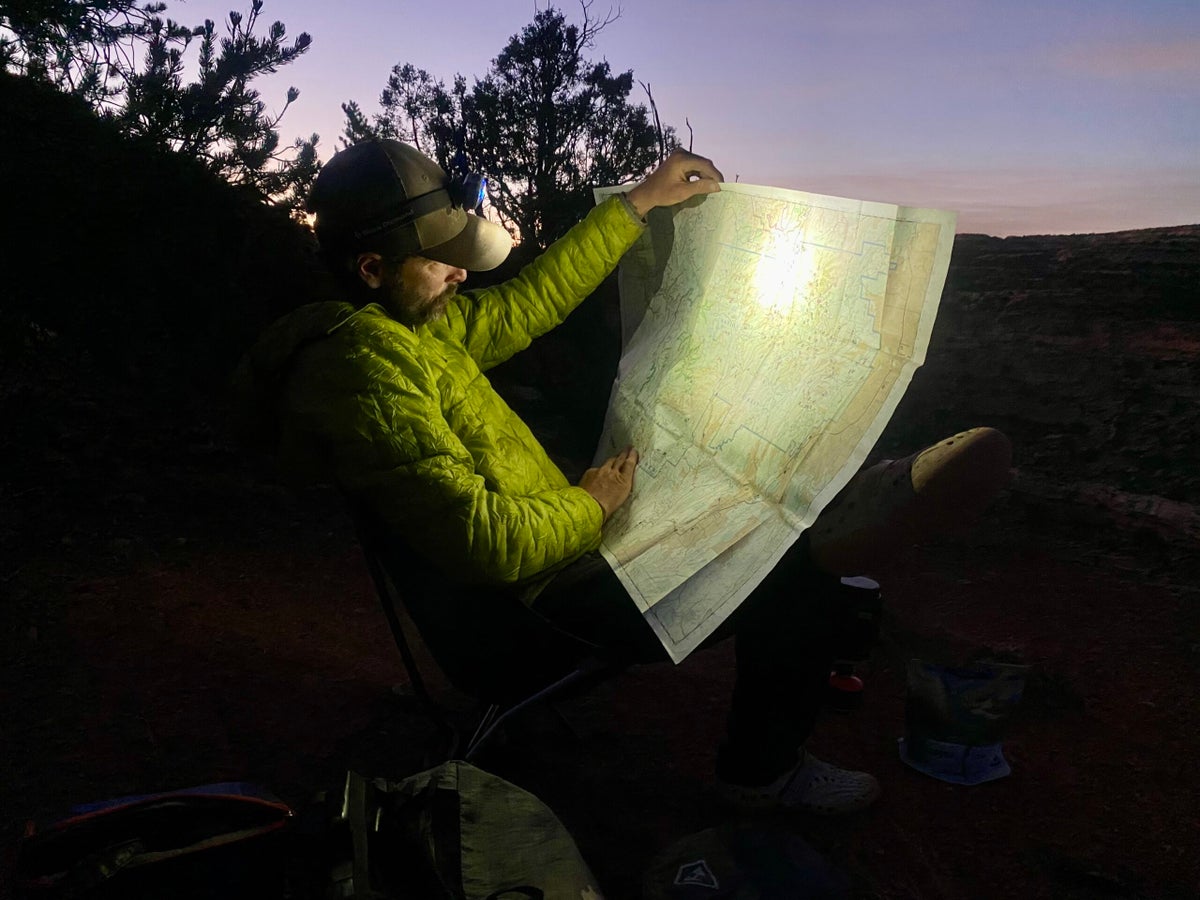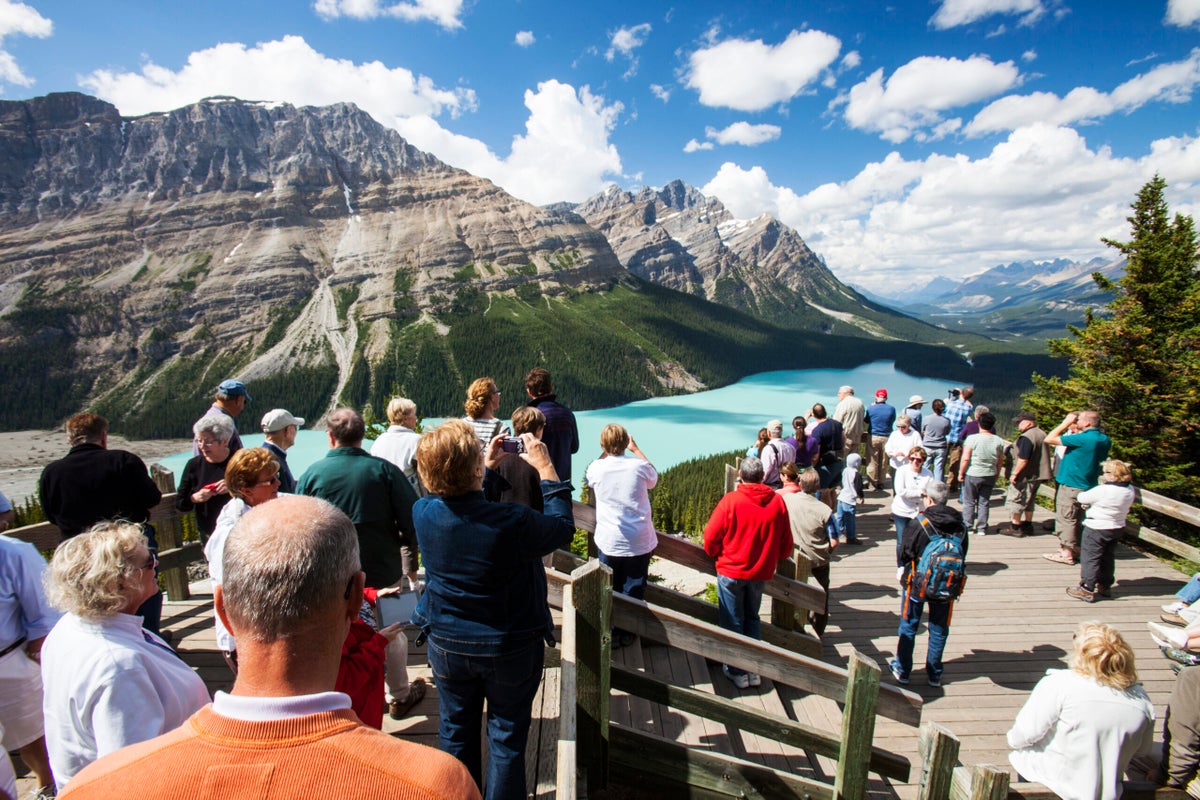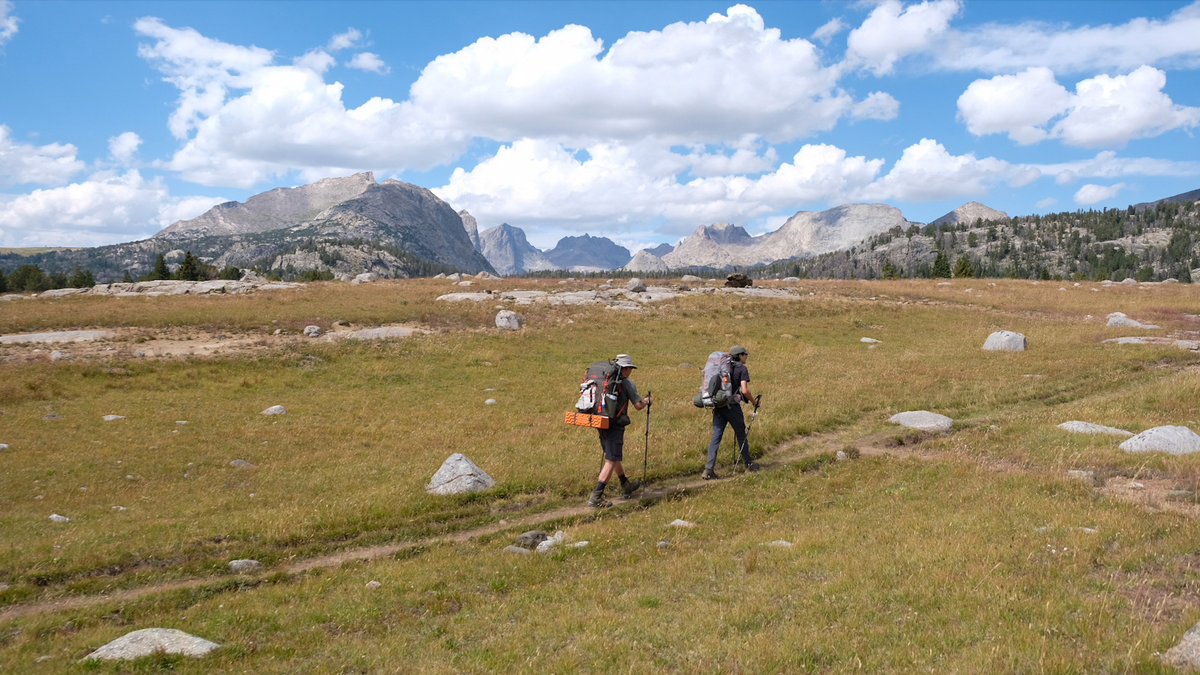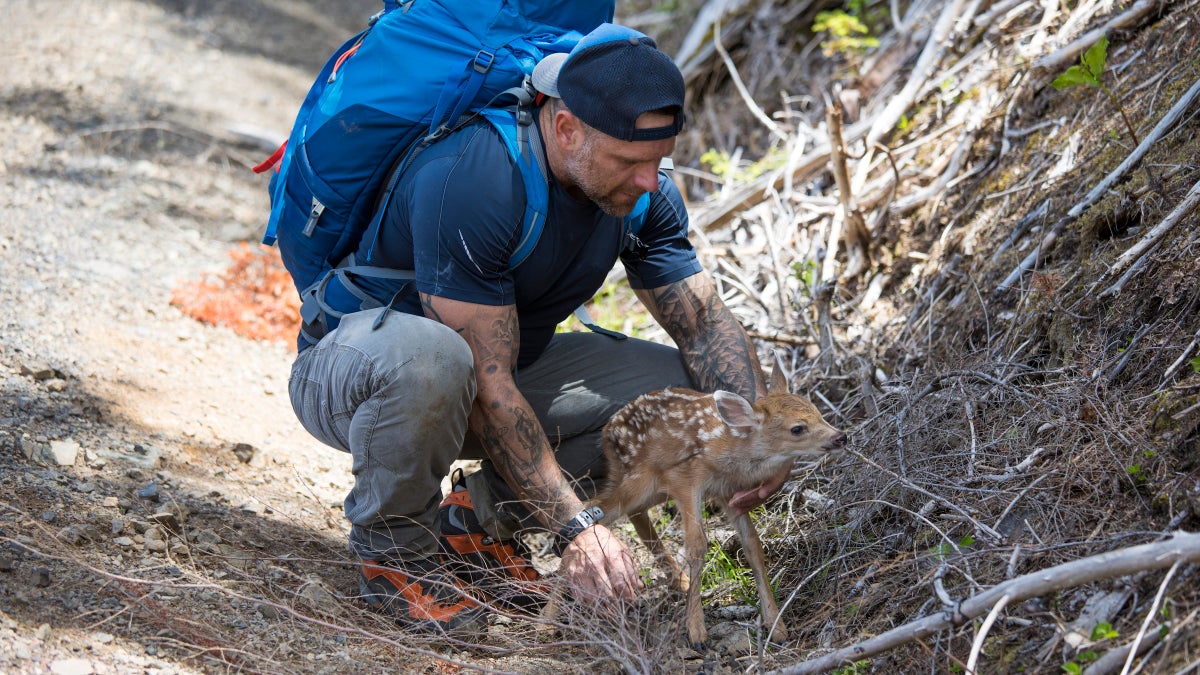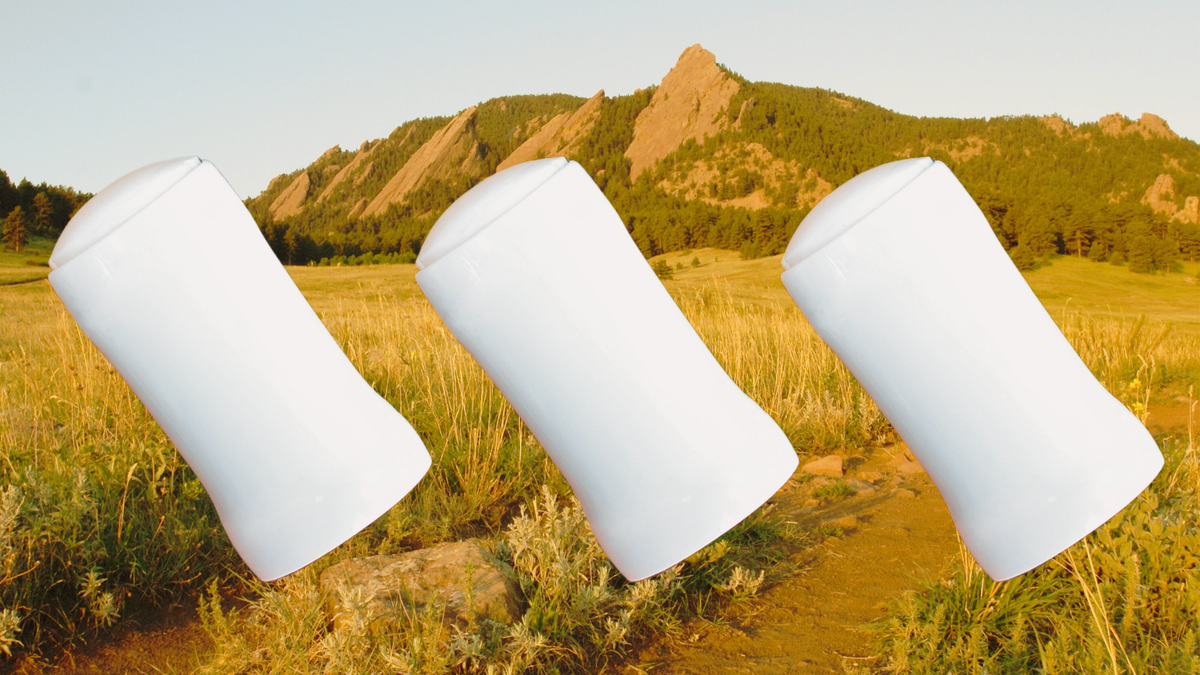
Here’s the hypothetical scenario: You find yourself alone in the backcountry without any supplies. No tent, no sleeping bag, no food. How long do you think you could survive? That’s the basic premise of Alone, a reality TV show that pits contestants against each other to see who can thrive the longest in the backcountry using only their wits.
It’s not that far-fetched of a scenario. Dozens of hikers get lost in the woods without the proper gear every year. That’s a nightmare scenario for most of us because the average weekend warrior doesn’t have a clue how to survive without DoorDash and synthetic down layers.
I speak from experience. I’ve spent more than 20 years making a living as an adventure journalist, and most of that time was spent completely ignorant of the key survival skills contestants practice on shows like Alone. But then I enrolled in a seven-day primitive skills course with Boulder Outdoor Survival School (BOSS), which has run multi-day survival courses in the desert surrounding tiny Boulder, Utah, since the ’60s. The lessons changed my life.

I spent a week hiking through high alpine forests and arid canyons, foraging for food, building shelters, and finding water with the guidance of some of the most experienced survivalists in the country; BOSS has more Alone alumni on its staff than any other primitive skills center in operation. I learned some cool skills, like how to start a friction fire and how to stay warm with pine cones and pine needles. But the most important thing I took away from the course is the knowledge that the hypothetical survival situation that haunts many of us isn’t necessarily a nightmare if you handle the situation correctly.
“Before I started taking courses at BOSS, I was terrified of getting lost in the woods,” says Jay Carson, BOSS’s executive director, who self-identified as a hapless weekend warrior before finding BOSS. “But I’m not worried about that situation anymore, because I know I’ll be fine if I spend a night or more out there without any gear. That knowledge has opened up a whole new world of adventure for me and my family.”
Carson is a staunch advocate for average adventurers learning the survival skills shown on Alone. These skills can give a person the confidence necessary to navigate a survival situation with a calm head.
“The worst thing you can do when you suddenly realize you’re lost, or hurt, is panic,” Carson says. “Unfortunately, that’s exactly what most people do in those situations.”
Getting lost is the most likely mishap you’ll encounter as an outdoor recreationist. During the last 20 years, I’ve been lost more times than I’d like to admit. Twice, I was so lost that spending the night in the backcountry without any gear or food was a real possibility.
While staying calm when you realize you’re lost in such situations will help you survive, it’s better to have solid navigational skills so you never get lost in the first place.

“The ability to read a map, I mean really read a map, is the key skill that everyone who enjoys the outdoors should learn,” Carson says. Day-length navigation courses courses, which are offered by outdoor centers all over the country, teach you how to orient the map using a compass, how to read contour lines, and how to translate the landscape around you to the paper map.
“Feeling competent with a map allows you to go to places other people aren’t going,” Carson says. “Being able to read your map means you can cut off the trail into a backcountry zone and make your way back to the parking lot safely. That’s what a solid map class will get you. You can go places where everyone else is not.” Of course, before you do so, make sure off-trail travel is permitted in the land you’re on.
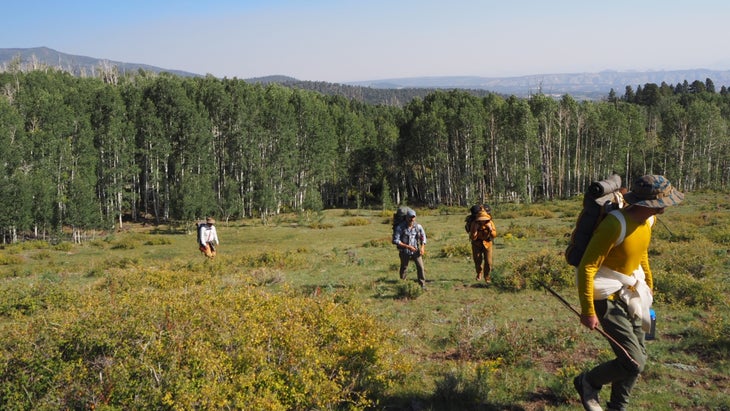
As we move into summer, when our national parks are at their busiest, many folks naturally want to get away from the crowds. The good news is many of our national parks have vast backcountry zones where off-trail travel is not only allowed, but encouraged—as long as you have the skills necessary to enjoy the wilderness safely.
Looking to put your survival skills to the test? Here are four national parks where you can travel off-trail—and at least pretend like you’re a contestant on Alone.
Badlands National Park, South Dakota
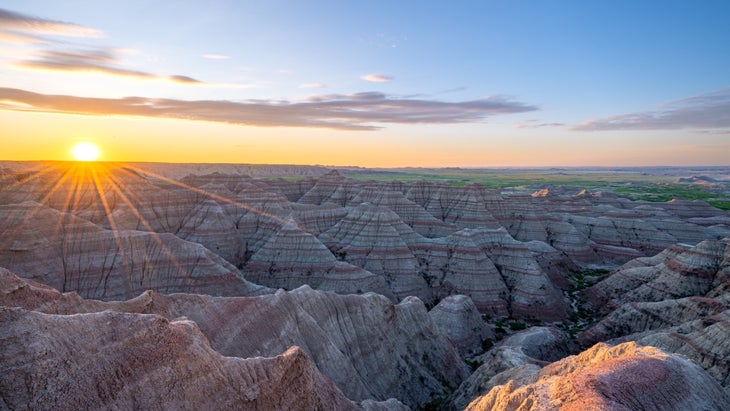
The 244,000-acre Badlands National Park offers a mix of towering rock spires and buttes surrounding verdant prairie. It’s also a paradise for backcountry exploration because, instead of an extensive trail system, Badlands operates under an “open hike” policy, which means you can hike and camp anywhere throughout the park, as long as you don’t set up a tent within a half-mile of established roads and trails.
The North Unit of the park offers the most straightforward backcountry routes. Go deep into the Sage Creek Wilderness, where tall cliffs flank one of the largest intact mixed grass prairies in the U.S. You can create a 20-plus-mile loop around the wilderness area by following game trails across washes, through tall grass, and up and over mesas with long-range views. And you’re guaranteed to see more bison than humans in this area (just be sure to keep your distance). The daytime hiking is great, but the clear views of the Milky Way at night are transcendent.
Use Sage Creek Campground as your basecamp. It’s a free, first come/first served facility with 22 sites. There are pit toilets but no water, so be sure to fill up at Ben Reifel Visitor Center. No permits are necessary for camping in the backcountry, but you do need to register your trip at the backcountry registers located at several points throughout the park.
Denali National Park, Alaska
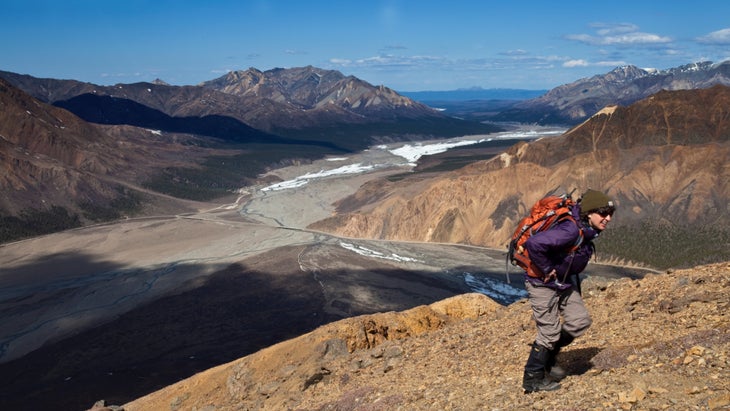
If you’re going to visit Denali National Park, there’s a good chance you’ll be hiking off-trail. The park is roughly the size of Massachusetts but only has a few established paths within its borders. Instead, the park encourages experienced visitors to forge their own paths across the tundra. Fortunately, the tree line in Denali stops at 3,000 feet in elevation. That open landscape makes off-trail travel less intimidating, as you can hike for miles without losing sight of big landmarks. The park’s bus system also makes it easy to shuttle point-to-point day hikes.
Visitors can drive the first 15 miles of Denali Park Road from the entrance. Beyond that, you have to take the shuttle bus. The road is closed for the foreseeable future at mile 43 because of a landslide. That gives you roughly 30 miles of road to use as your trailhead when choosing your off-trail adventure. Check out the Jenny Creek backcountry zone (Unit 3), which is accessible via the Savage River Bus between the park headquarters and the Savage River. The unit is comprised of brush-covered flats and rolling hills at the base of extensive systems of ridges, which give you the chance for extended ridgeline walks with 360-degree views of the park. Start your hike anywhere along the Park Road between the Headquarters and mile 8. Just pick a spot that has the least amount of brush and head toward the nearest ridge. Keep an eye out for moose, too.
Alaska Tours offers half-day guided hikes that are completely off trail and travel through the forested lower elevations of the park if you want to go with an expert (from $199).
Canyonlands National Park, Utah
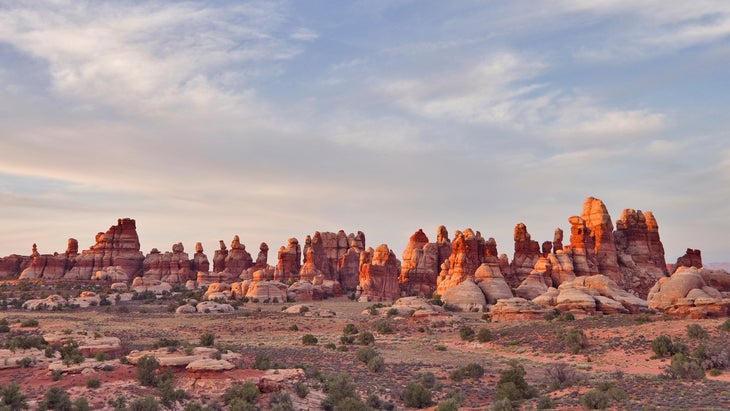
The appropriately named Canyonlands National Park protects roughly 340,000 acres of gorges, buttes, and plateaus created by the Colorado River and its tributaries. While there are some frontcountry facilities, Canyonlands is predominantly a backcountry park divided into three zones: the Needles District, Maze District, and Island in the Sky District. Head to the Maze District for the most primitive routes and highest sense of solitude. It’s the most remote district of Canyonlands. Even the dirt roads are a challenge; they’re 4WD-only and can take hours to navigate safely. It’s not a place you visit lightly or quickly, so plan on spending more time than you think you’ll need to get from point A to point B. There are established routes that are typically marked with cairns, but they’re tough to follow, so route-finding skills are key.
Before you settle on a route, double-check that it’s not an established canyoneering line, which will require specialized gear.
If you want the fastest way into the Maze District, catch a jet boat ride up the Colorado River and get dropped off in the thick of the backcountry at Spanish Bottom, and begin your hike from the edge of the river hiking your way up the various non-technical canyons ($295 per person round trip).
Whether you drive into the Maze or catch a boat, bring a paper map as GPS units are known to fail inside this part of the park. You’ll need a permit, which you can get up to four months in advance ($36 reservation fee, $5 per person). Double-check timing; you don’t want to be visiting canyonlands during monsoon/flash flood season.
Great Sand Dunes National Park, Colorado
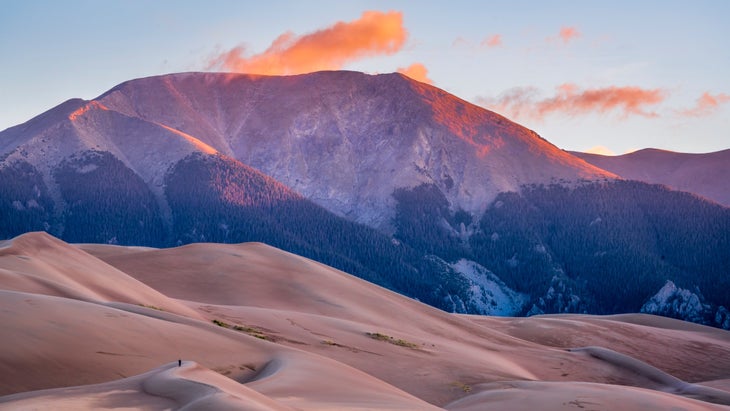
Great Sand Dunes National Park is carved out of Colorado’s San Isabel National Forest, protecting a 30-square-mile dune field with certain ridges rising more than 700 feet above the surrounding sands. It’s a slice of the Sahara Desert in the heart of Colorado, and the dunes are completely trail-free. Instead of established paths, visitors are encouraged to trek across the dunes on their own. You can even rent sleds or snowboard-like sand boards to slide down the faces of the steeper dunes.
Most hikers head towards the highest hump on the first ridge from the parking lot and call it a day. But if you want a real adventure, make a beeline for Hidden Dune, which at 741 feet, is the tallest dune in North America. It’s a seven-mile round trip hike from the Dunes Parking Lot, and you won’t be able to see the sandy peak until you’ve reached its base (thus the name), so be sure to use its GPS coordinates to navigate (37.775916, -105.531912). Also, mark your starting location too; the wind and shifting sands could obscure your footprints, so you’ll need to set a pin to retrace the steps to your car.
Time your trip right and you can splash through Medano Creek, a seasonal stream that forms a border to the dune field. The park service updates the current conditions of the creek on their website. Be sure to wear closed-toed shoes and long pants when exploring the dunes, as the sand can reach triple-digit temps in the summer.
Graham Averill is Outside magazine’s national parks columnist. He has no desire to compete on the show Alone, but he’s very proud of the shelter he learned how to build during the survival course at BOSS. He recently wrote a guide to visiting overcrowded and underfunded national parks this summer.
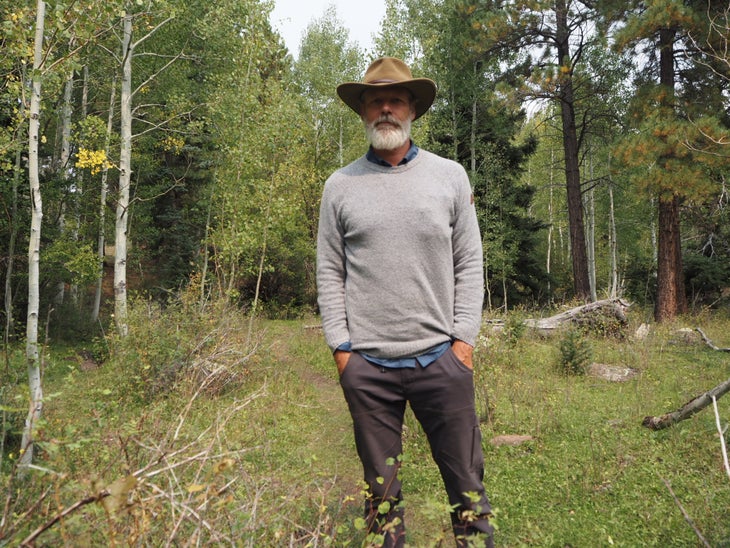
The post The Lessons I Learned in ‘Alone’ Survival School Could Keep You Alive appeared first on Outside Online.











